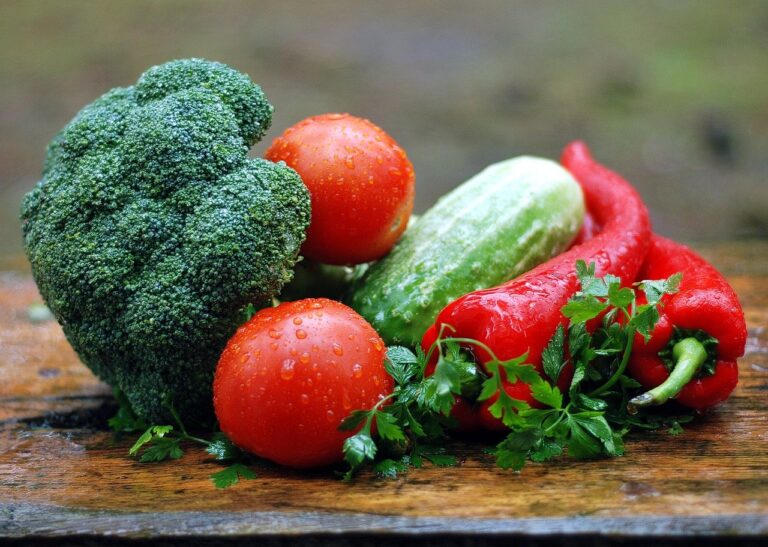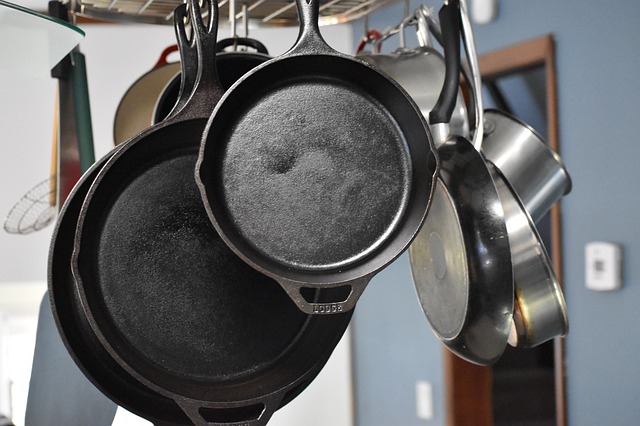How to Store Produce to Keep It Fresh
You just came home from your local farmer’s market and you picked up more produce than you should have. You want your haul to last as long as possible, but there is one question; how do you store all of this produce so that it will stay fresh for as long as possible?
The way produce is stored varies for each type of fruit and vegetable. Some fruits and veggies need refrigeration while others actually taste better if they are left at room temperature, and others can be left at room temperature for a limited amount of time before they spoil and go bad. There is also some produce that needs to be separated from other produce.
Here are some tips to help you sort out how to store commonly used fresh fruits and vegetables so that you get the most bang for your buck!

Separate Ethylene Gas Producers From Sensitive Produce
Some fruits naturally give off a gas called ethylene, which is produced from certain types of ripening fruit. Ethylene gas speeds up the ripening process, and can even cause spoilage of certain fruits and veggies such as leafy greens, cabbage and broccoli. So it’s important to store ethylene-sensitive foods away from ethylene-producing foods. Here are some of the most common fruits that give off ethylene include:
- Apples
- Avocados
- Bananas
- Cantelope
- Figs
- Honeydew
- Kiwi
- Mangoes
- Nectarines
- Peaches
- Pears
- Prunes
- Tomatoes
Here is a list of some of the common fruits and vegetables that are sensitive to ethylene include and should not be stored next to fruits that produce this gas.
- Green beans
- Broccoli
- Brussels sprouts
- Cabbage
- Carrots
- Cauliflower
- Chard
- Cucumbers
- Eggplant
- Leafy greens
- Peppers
- Potaotes
- Squash
- Sweet potatoes

Not All Produce Needs to Be Refrigerated
Many fruits and vegetables should only be stored at room temperature. For example, tomatoes maintain their flavor if they are left at room temperature while refrigeration can cause cold damage or prevent them from reaching their full flavor potential. Here is a list of common fruits and vegetables that will taste better when stored at room temperature.
Bananas. Refrigerating a banana will change its texture and turn its peels brown. Store them on the counter always. Peel and slice overripe bananas and place them in the freezer to use for smoothies. Bananas will last at room temperature for about 2 to 5 days, depending on how ripe they are.
Cucumbers. Surprisingly cucumbers taste better when they are stored at room temperature. Leave them out on the counter and they will last 1 to 2 weeks.
Melons. Whole melons taste much better when they are left out on the counter before cutting them. They will lose their fresh taste and become mealy if you keep them in the refrigerator. Once the melon is cut, store the unused portion in the refrigerator. Depending on how ripe the melon is, it should at for 3 to 5 days at room temperature. Once it’s been cut store it in the fridge for 2 to 3 days longer.
Onions and Garlic. Since the refrigerator is cold and humid, it will change the texture of onions and can cause garlic to become moldy. Both onions and garlic should be stored in a cool dark place separately and away from potatoes. Sliced onions can be stored tightly wrapped in the fridge for 5 to 7 days. If stored properly onions and garlic will last in a cool dark place for up to 4 weeks.
Potatoes & Sweet Potatoes. Cold temperatures will affect the starch and flavor in both potatoes and sweet potatoes. It’s best to store them in a cool, dark place such as a basement or garage. Potatoes should last up to two weeks at normal room temperature and even longer in cooler temperatures (45 to 55 degrees F).
Tomatoes. Store your tomatoes on the counter always. They will lose their flavor and texture when they are stored in the fridge. Depending on the conditions and how ripe the tomato is, a tomato should last 5 to 10 days at room temperature.
Winter Squash. Store it in a dry place from 55 degrees to room temperature. Winter squash will last about a month if stored properly.

Ripen at Room Temperature, Store in Fridge
Apples. Unripe apples will ripen quickly when left on the counter. If your apples are unripe, place them on the counter for a few days and move them to the fridge where they will keep for a week.
Avocados. Depending on the level of ripeness in an avocado, store them on the counter until they begin to soften, then place them in the fridge and use them up within 3 to 4 days.
Kiwi. If a Kiwi fruit is not ripe store it at room temperature for a few days until it becomes ripe (firm with a little give when pressed). Once the fruit is ripe, store it in the refrigerator for 1 to 2 weeks.
Mangoes. Just like avocados, though not as temperamental, can be stored unripe on the counter. Once they begin to ripen, they will feel soft to the touch, refrigerate them for 3 to 5 days.
Pears. Store unripe pears at room temperature for a few days. Once they begin to feel soft, store them in the fridge for 3 to 4 days.
Stone fruit (peaches, nectarines, apricots, cherries and plums). Stone fruits can be stored on the counter until they become ripe and then in the fridge where they will keep for about a week.
Tip! place peaches, plums, and nectarines in a brown paper bag to speed up the ripening process.

Store These Fruits and Veggies in the Fridge
Fruits and vegetables don’t always do well in a room-temperature environment. While some can be stored at room temperature, they won’t last as long before spoiling if you choose to store them this way. Below is a list of the most common fruits and veggies that should be kept in the refrigerator at all times.
Berries (strawberries, blueberries, raspberries, blackberries). These fragile fruits don’t last long. Do not wash them until you are ready to eat them. Store them in the fridge in an airtight container for up to 3 days and rinse them just before eating.
Broccoli and Cauliflower like Brussels sprouts will last for a week in the refrigerator wrapped in refrigerator.
Brussels sprouts. Brussels sprouts are hearty and will last a week to 10 days when they are loosely wrapped in the fridge.
Cabbage. Is a hearty vegetable, and will last a long time. Wrap cabbage and place it uncut in the fridge where it will last for up to three weeks. Cut it as you need it, once it’s cut it will not last as long.
Carrots & Parsnips. These are root vegetables that you can leave in a cool dark place but will last longer in the refrigerator. Store them in the crisper drawer in your refrigerator for two to three weeks.
Celery. For best results, celery should not be stored in the plastic that you buy it in. Instead, wrap it in paper towels or foil to keep it fresh. It should last for a week or two this way.
Citrus Fruit. The best way to store citrus fruit is in the refrigerator in the fruit/veggie drawer. Citrus will last a few weeks in the refrigerator.
Grapes. Should be stored in the refrigerator unwashed. They will last a week this way and don’t forget to wash them before serving them.
Leafy Greens. Rinse, thoroughly dry and wrap in a towel and place in a bag or reusable container in the refrigerator for the best results. Leafy greens will last about 5 days in the refrigerator.
Green Beans. Should be wrapped loosely and stored in the refrigerator for up to a week.
Peppers. Store your fresh peppers unwashed and wrapped in the refrigerator. Depending on how fresh they are, they will last about 2 weeks in the fridge.
Zucchini. Store them wrapped loosely in your crisper drawer. They will last for 1 to 2 weeks.
Tip! To avoid using disposable plastic bags, I like to store my produce in the refrigerator in reusable bags like these stasher bags or glass food storage containers which are airtight. They are durable and easy to clean.
As you can see, not all produce is the same when it comes to storage. These are just a few simple tips that can ensure your produce stays fresh and ready to eat for days. The infographic below is a quick reference to help you store your various fruits and vegetables.



